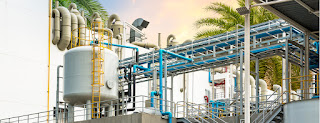Industrial Burner Market Deal Highlights: Who’s Acquiring Whom?
The global industrial burner market is witnessing transformative growth as industries increasingly seek efficient and reliable heating solutions. Industrial burners, essential components used to generate controlled heat energy in various manufacturing and processing applications, have become pivotal in driving operational efficiency, reducing emissions, and meeting stringent regulatory standards. This article explores key trends, technological advancements, market dynamics, and future outlook shaping the industrial burner market.
Overview of the Industrial Burner Market
Industrial burners play a crucial role across multiple sectors, including power generation, metal processing, chemicals, food and beverage, ceramics, and glass manufacturing. These burners provide the necessary thermal energy to facilitate combustion processes, ensuring optimal performance in boilers, furnaces, kilns, and ovens. The growing demand for enhanced fuel efficiency and eco-friendly combustion technologies is significantly influencing product development and adoption trends in the market.
Key Market Drivers
Several factors are propelling the industrial burner market forward. Increasing industrialization and infrastructure development in emerging economies have elevated demand for high-performance burners capable of handling diverse fuel types such as natural gas, oil, biomass, and waste gases. Additionally, the escalating focus on reducing carbon footprints and adhering to environmental regulations is driving manufacturers to innovate low-emission burner technologies.
The push for energy-efficient solutions has also catalyzed investment in advanced burner designs that optimize fuel consumption and reduce waste heat. Furthermore, the integration of automation and smart controls into burner systems enhances operational safety and reliability, making these technologies attractive to industrial operators.
Technological Advancements Shaping the Market
Technological innovation remains at the forefront of the industrial burner market evolution. Modern burners are increasingly equipped with intelligent control systems that allow precise modulation of fuel and air flow, thereby improving combustion efficiency and minimizing emissions. The adoption of advanced sensors and IoT-enabled monitoring tools enables real-time performance tracking and predictive maintenance, reducing downtime and operational costs.
Hybrid burners capable of operating on multiple fuels are gaining traction due to their versatility and cost-effectiveness. Additionally, research into alternative fuels, such as hydrogen and biofuels, is opening new avenues for sustainable burner applications. Manufacturers are investing in developing burners compatible with these fuels to support industries in transitioning to greener energy sources.
Market Segmentation and Application Areas
The industrial burner market is broadly segmented based on burner type, fuel type, application, and end-use industry. Burners are classified into types such as gas burners, oil burners, and dual-fuel burners, each designed to meet specific operational needs. Gas burners remain popular due to their cleaner combustion characteristics, whereas oil burners are favored in regions with abundant oil supply or limited natural gas infrastructure.
Application-wise, industrial burners are indispensable in boilers, furnaces, ovens, and kilns. The power generation sector extensively utilizes burners for steam generation, while the metal and glass industries rely on burners for melting and heat treatment processes. The chemical and petrochemical sectors require precise temperature control for various reactions, making burner efficiency critical to process optimization.
Regional Market Dynamics
Regional factors heavily influence the industrial burner market landscape. In developed economies, stringent environmental regulations and the emphasis on energy conservation drive demand for technologically advanced burners. These regions focus on upgrading existing infrastructure with state-of-the-art burners that comply with emission standards.
Conversely, emerging markets are witnessing robust growth due to rapid industrialization and infrastructure expansion. Governments in Asia-Pacific, Latin America, and the Middle East are investing heavily in industrial facilities, creating a strong market for both new installations and retrofits. Additionally, the availability of diverse fuel resources in these regions shapes burner preferences and designs.
Competitive Landscape and Industry Trends
The industrial burner market is characterized by the presence of numerous global and regional players focusing on product innovation, strategic partnerships, and mergers and acquisitions to strengthen their market position. Companies are prioritizing the development of burners that balance performance, cost-effectiveness, and environmental compliance.
Collaborations between burner manufacturers and technology providers are fostering the integration of smart combustion systems with advanced analytics and control software. This trend enhances system reliability and customer experience, allowing end-users to achieve higher productivity with reduced environmental impact.
Challenges Facing the Industrial Burner Market
Despite promising growth prospects, the industrial burner market faces several challenges. High upfront costs associated with advanced burner systems may deter adoption, especially in cost-sensitive industries or regions. Furthermore, the transition to alternative fuels requires significant R&D investment and modifications to existing infrastructure, which can be a slow process.
Another challenge lies in navigating complex regulatory environments that vary by country and industry. Ensuring compliance while maintaining operational efficiency demands continuous innovation and adherence to quality standards. Additionally, supply chain disruptions and fluctuations in fuel prices can impact market stability.
Future Outlook and Growth Opportunities
The future of the industrial burner market appears robust, driven by ongoing industrial expansion, rising energy demands, and a global shift toward sustainable manufacturing practices. Emerging technologies, such as AI-powered combustion controls and eco-friendly burner designs, promise to redefine the industry’s operational landscape.
Growth opportunities are particularly significant in the development of hydrogen-compatible burners, aligning with global decarbonization efforts. Moreover, retrofitting existing industrial facilities with modern burners offers a lucrative avenue for market growth. The increasing adoption of digital twin technology and remote monitoring systems will further enhance burner performance and maintenance efficiency.
Conclusion
The industrial burner market stands at a critical juncture, shaped by innovation, regulatory pressures, and evolving industrial needs. As industries worldwide strive for cleaner, more efficient, and safer heating solutions, the demand for advanced industrial burners will continue to rise. Companies that invest in research and development, leverage smart technologies, and focus on sustainability are well-positioned to capitalize on the market’s growth potential.
With technological advancements and a global emphasis on reducing emissions, the industrial burner market is set to play a pivotal role in the future of industrial heating and energy management, ensuring industries operate with greater efficiency and environmental responsibility.



Comments
Post a Comment